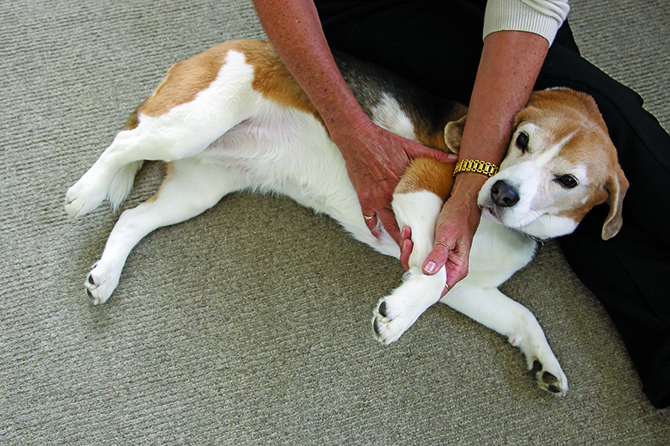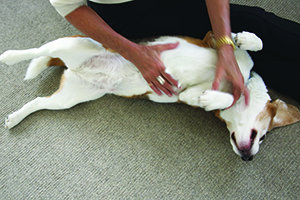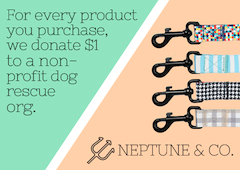Kim Freeman
Certified Canine Massage Therapist | CanineMassageTreatment.com

From:
THE HOLISTIC DOG:
INSIDE THE CANINE MIND, BODY, SPIRIT, SPACE
By Laura Benko
Photographs by Susan Fisher Plotner
Reprinted by permission from Skyhorse/Helios.
Gaining trust is essential for canine masseuse Kim Freeman when working with her furry clients. She achieves this by always going to the comfort of each dog’s home and then making sure that the owner is present, even if they are quietly doing something else in the room. “When their parent is present, it shows that it’s okay. It lets the dog know that he or she can begin to trust me.” She also wears a white lab coat (“it’s a uniform of consistency”) and always plays classical, opera, or “spa-like” music. She will never play anything with violins because “it’s too high-pitched for dogs.”

Freeman says she speaks animal and loves the typical response she gets from the dogs that just “give themselves up to me” and surrender. Licks, heavy sighs, and appreciative glances are her rewards. Whether she is teaching abandoned and abused dogs the power of touch and compassion when she volunteers at a nearby shelter or helping an exhausted new mom of five pups whose milk supply has dried up, Freeman says that the power of massage can be transformational and vital for the well-being of your pet.
The first consultation at home will be an evaluation of your dog, the reason for the massage, and your dog’s medical history. A gentle, head-to-tail “laying of hands” is applied to quiet and calm the client.
Before a front leg stretch, which helps to lengthen muscles and increase blood circulation, the elbow groove and shoulder are warmed up and worked on with a series of strokes. Take note of any spasms.
The evaluation also includes discussing the dog’s disposition; posture and comfort level standing, sitting, and lying down; sensitive areas on the body; and exercise habits and daily routine.
Completely relaxed and enjoying the strokes applied to the tummy, the client surrenders to the pleasure of massage.
1. We all love petting our dogs, but we usually go only fur deep. Try petting your dog with your palm flat so you just feel its body under your hand, which will give a gentle but more stimulating action, therefore increasing blood circulation, the primary goal of therapeutic massage. In addition, stroking gently with your fingertips in the direction of the muscles will also help with circulation and goes a little deeper than the hand. Try doing this all over the body.
2. Many dogs have sensitive areas as a result of a variety of problems in their past. Some of these are psychological, others medical. With gentle strokes, try for just a few minutes at a time, running your hand over sensitive areas, calmly speaking to your dog, and trying to get his trust. Being patient is very important. Repeat daily or every other day to see if your pet can become more relaxed and trusting with these sensitive areas. This can also prepare him or her for an overall professional massage, a visit to the vet, nail clipping, and grooming.
3. The excited dog. With a low and calm voice, calmly lay your hands on the dog’s head or neck and then gently on his back. Continue slowly and gently to lay your hands on his back and down the spine. Repeat a few times.
4. With circular motion and an up-and-down movement like scratching him, rubbing the areas a dog has a hard time getting himself will make him a happy pup. On the scruff of the neck just below the head, under the chin, and on the chest are wonderful feel-good places to do this.
5. Prior to a long walk or playdate, doing any of the above movements will warm up your dog’s muscles and help decrease muscle sprain.
6. The more you familiarize yourself with your dog’s body, learning his lumps and bumps and sensitive areas, the more knowledgeable and helpful you are to the vet in early detection if something is new or doesn’t feel right.













